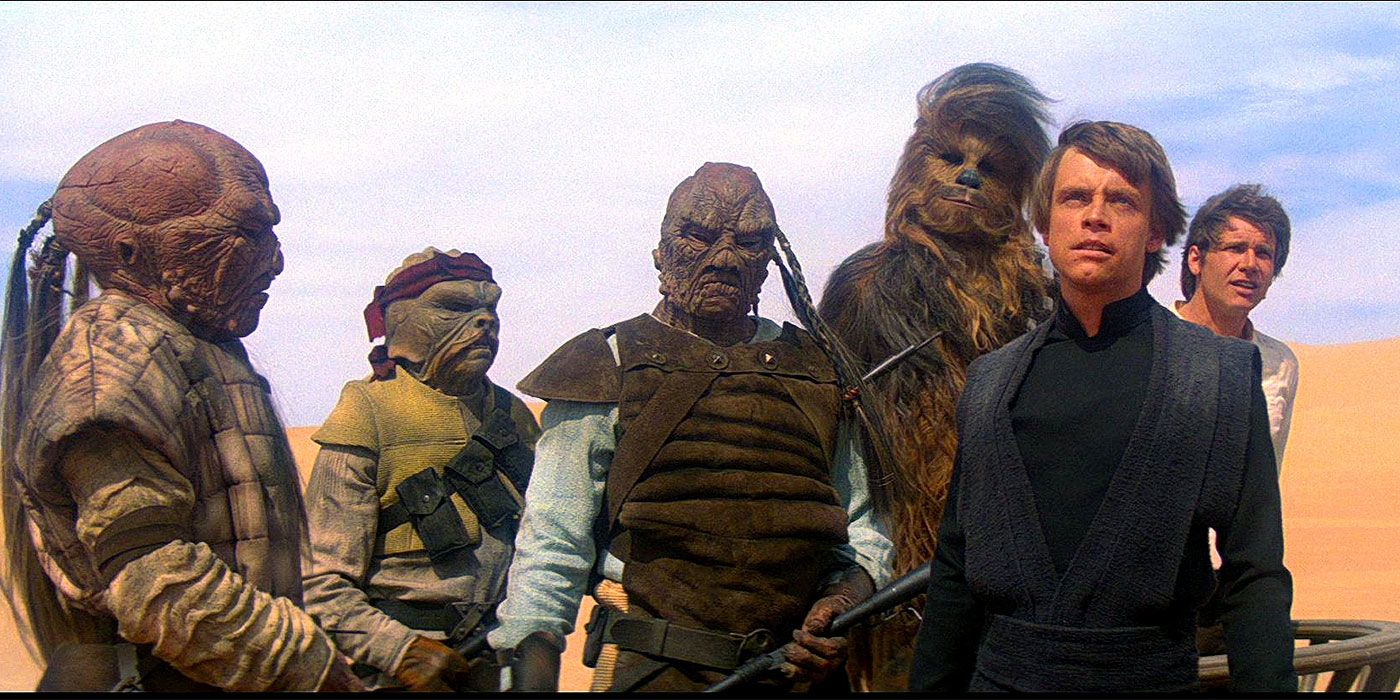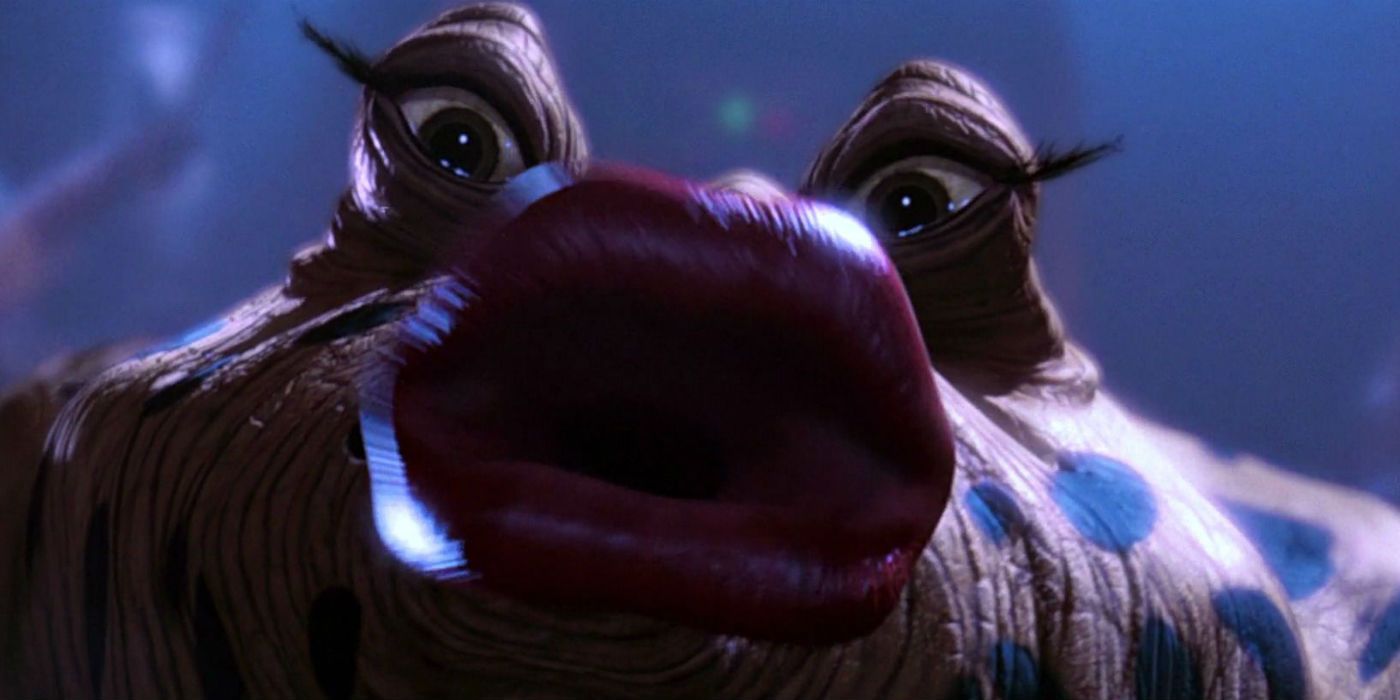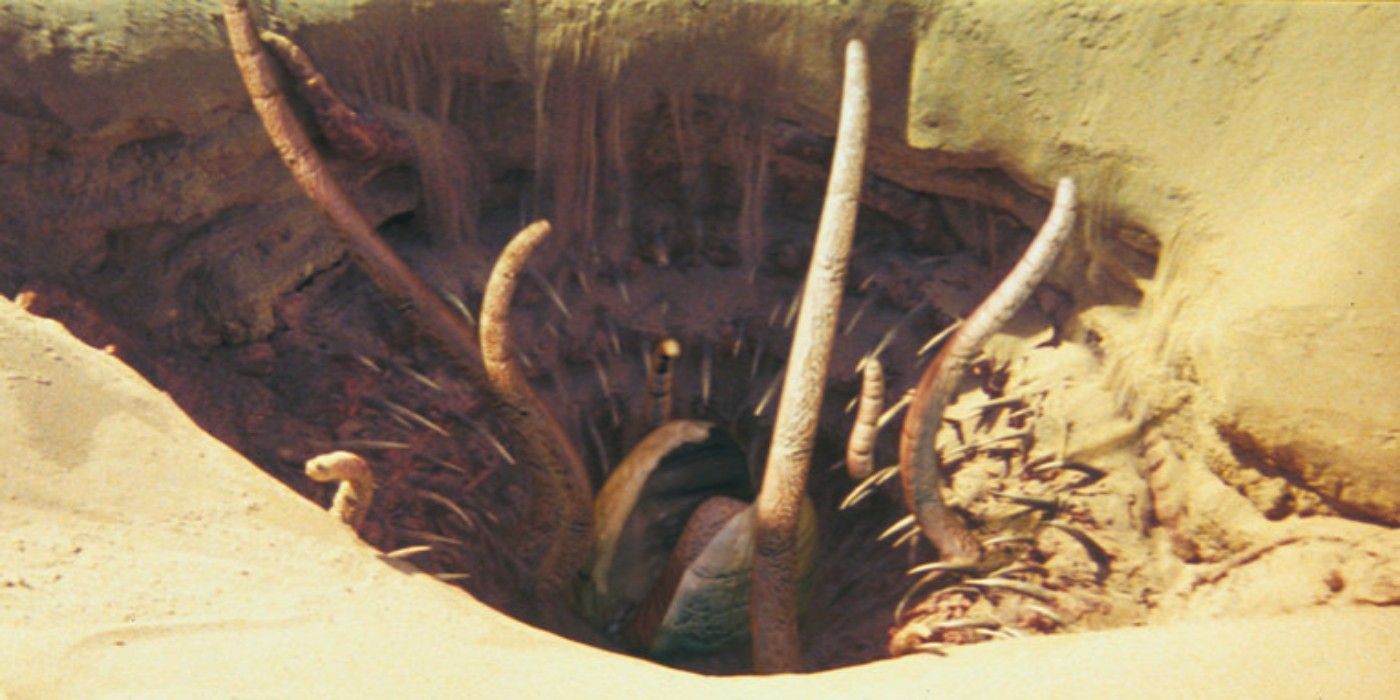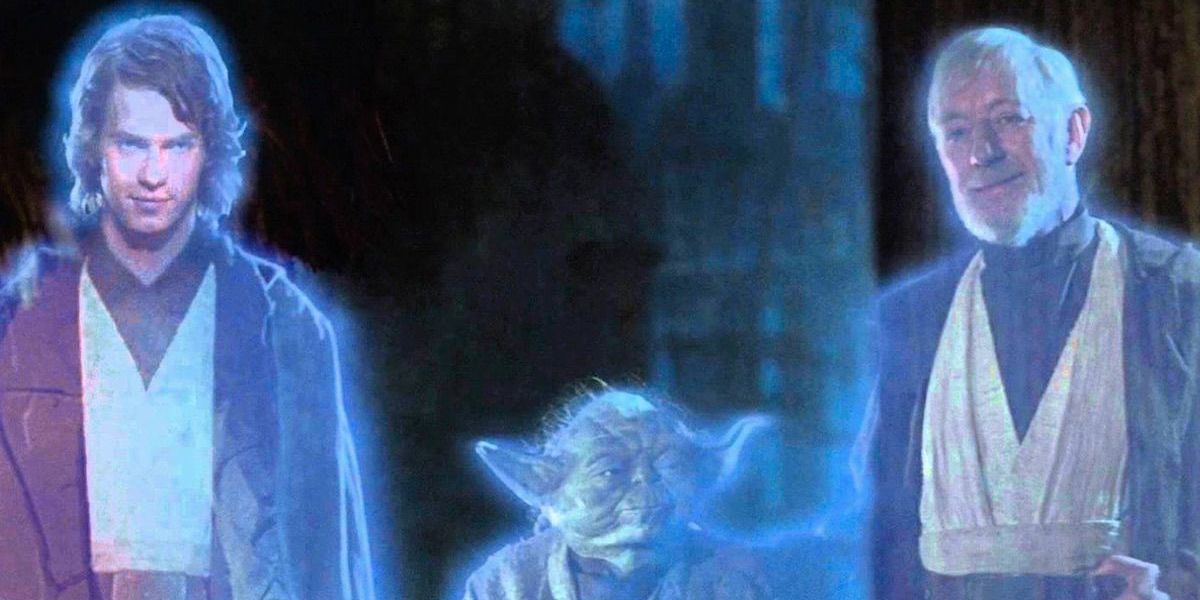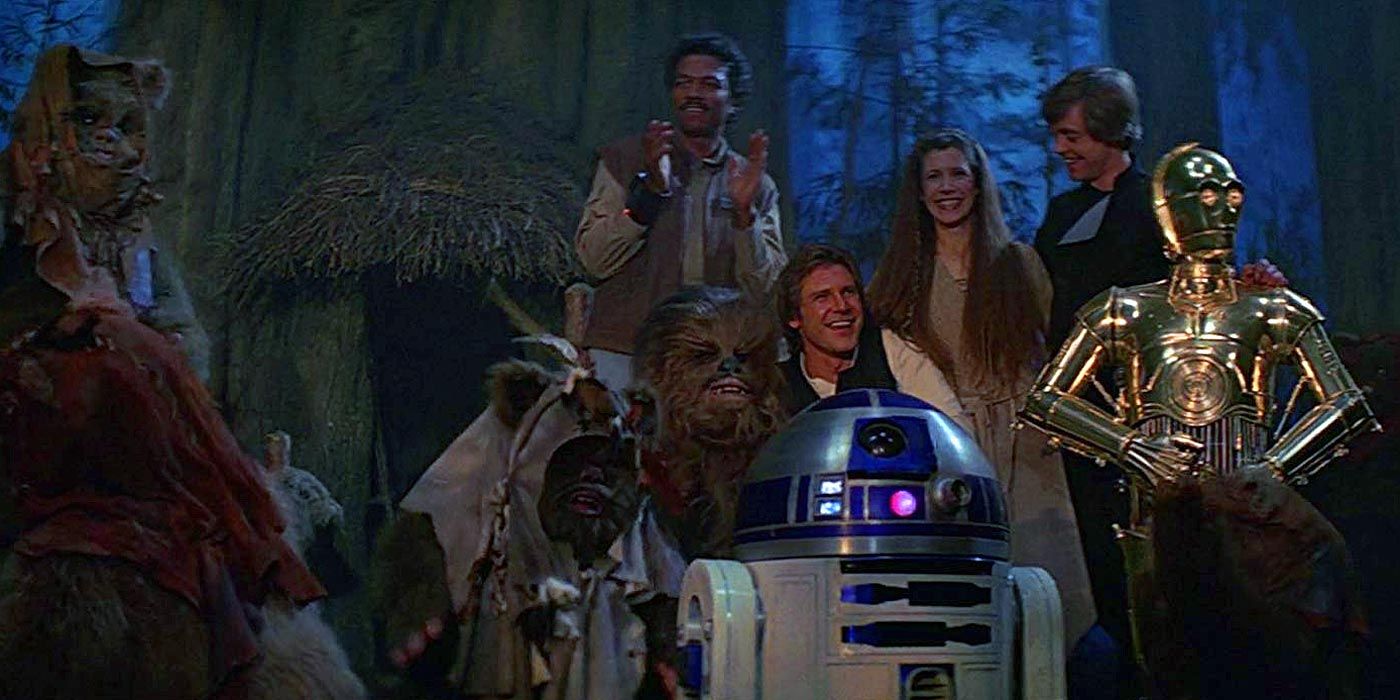When given the opportunity to adjust things in his films so they continue to withstand the test of time, Star Wars creator George Lucas gladly took to it. The final film in the original trilogy of the Skywalker Saga: Return of the Jedi has seen a number of changes over the years, much like the other two films in the saga. Multiple re-releases at Lucas' request have brought on some pretty infamous adjustments, with some being even more controversial than the "Han shot first" debate.
Looking back at the 1997 Special Edition, the 2004 Trilogy DVD, and the 2011 Blu-ray, here are some of the most significant changes Lucas made to Return of the Jedi over the years.
Jazz Night at Jabba's Palace Introduced CGI Aliens
The first of many infamous changes take place in Jabba's palace. In the original 1983 release, the Max Rebo Band performs the song "Lapti Nek," with dancer Oola performing alone to please Jabba. The aliens performing the song are brought to life by puppets, and the song is catchy while not overshadowing what is happening in the rest of the scene, which culminates in Oola getting tossed into the rancor's den to her doom after failing to please Jabba with another dance.
The 1997 Special Edition completely changed the song to "Jedi Rocks," which is a louder, jazzier piece featuring some of the creepiest CGI aliens one could think of in the Star Wars universe. Oola also becomes one of three backup singers during the number before her demise. It's one of the most surreal moments in the movie, as well as one of the most unnecessary changes made to Return of the Jedi.
Also, though not as important, there are a couple of extra scenes showing bounty hunter Boba Fett flirting with some young alien women, as well as additional scenes with Oola in the rancor pit.
CGI Made the Sarlacc Pit Scene Even Scarier
Speaking of creepy CGI, there was a lot of it added to the Sarlacc pit scene in the 1997 Special Edition. Originally, the Sarlacc pit looked almost like a bottomless hole with teeth and only one tentacle sputtering out of the side. The 1997 edition added a much bigger Sarlacc to the shots, with a giant mouth and multiple tentacles. When Luke frees himself, and others start falling into the pit, additional shots were added of the mouth fully engulfing its victims. It doesn't change the outcome of events, but the comically cartoonish mouth and tentacles make the scene look pretty funny.
There is also a minor dialogue change: When Han is about to rescue Lando after he is grabbed by the Sarlacc's tentacle, he originally said, "It's all right, trust me." The 1997 Edition changed this to "It's all right. I can see a lot better."
Vader Broke His Silence While Killing Palpatine
Though not the most significant addition, it's still pretty noticeable if paid attention to. When Palpatine is torturing Luke with Force lightning, Vader makes the ultimate sacrifice by throwing the Emperor down a reactor shaft, killing Palpatine and mortally wounding himself in the process. The scene originally played out with Vader performing the act in silence, but in the 2011 Blu-Ray version, Vader says "No!" twice.
Since the context of the scene is already clear without Vader's screams, adding the extra dialogue just makes Vader sound silly. Not to mention, it calls back to the drawn-out "Noooooo!" at the end of Revenge of the Sith.
Anakin Skywalker's Ghost Joined Yoda and Obi-Wan
But perhaps the most infamous Return of the Jedi change of all was the digital insertion of actor Hayden Christensen, the man who played Anakin Skywalker in the prequel trilogy. The change first appears when Luke takes off Darth Vader's mask after he sacrifices himself. Originally, maskless Vader was played by Sebastian Shaw, but the 2004 DVD Trilogy digitally altered Vader's face to appear more like Christensen. This is most evident in the removal of Shaw's eyebrows, reflecting how Anakin's were originally burned off at the end of Revenge of the Sith.
But this is most evident at the celebration on Endor when the force ghosts of Anakin, Obi-Wan, and Yoda appear. While Shaw was present in the original version, the 2004 edition completely cut Shaw out and replaced him with Christensen to keep the prequel continuity in line with this film.
Additional Minor Changes to Return of the Jedi
Just like the two films before it, several minor changes were also made to Return of the Jedi to enhance the visuals. Picture quality is more consistent, with explosion effects that look better and sound effects that are improved. Lightsaber colors were also corrected over the years, being more consistent with various shots.
Multiple new scenes were also added to the ending of the film, showing planets such as Naboo, Tatooine, and Coruscant celebrating the demise of the Empire. The scenes also digitally insert various landmarks from the prequel trilogy, such as the Galactic Senate building, into the shots. The "Ewok Celebration" song was also cut and replaced with a new John Williams score in the 1997 Special Edition.

